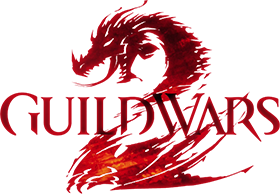Guild Wars 2: Examining the Combat System
The ZAM staff continues its in-depth coverage of the upcoming sequel by delving into the mechanics and reasoning behind the game's battle mechanics.
As we have mentioned in our last two Guild Wars 2 stories, we had the incredible opportunity to take a trip to the ArenaNet studios, where the development team is hard at work on the sequel to one of the bestselling MMO (and PC) games of all time, Guild Wars. In this interview, we sit down with designers Isaiah Cartwright and Jon Peters to discuss how the combat system has been developed for the sequel.
ZAM: How do the combos and tactics that we’ve heard so much about in the developer journals work? It seems like a very “real time” sort of effect for an MMO…
Isaiah Cartwright: The biggest thing that has allowed us to achieve this sort of comboing system is the fact that we’re changing the way we do skills. In Guild Wars 1, the designers would come up with the skills and then we’d hand them off to a coder and the coder would create the skills for us. That worked really well in that it gave us a lot of skills rather efficiently and the skills did exactly what we wanted them to do, but that didn’t give us a ton of room to experiment. Every time we wanted to come up with some crazy weird idea, we couldn’t really do it because of the process involved. It also meant that the coders were spending a lot of time doing pretty simple code.
This time around, we really changed the philosophy in how we create this kind of content. The programmers now build us a lot of pieces, and the design team sits down and puts them all together. What that allows us to do is come up with lots and lots of ideas that we then turn into something cool. Additionally, the programmers now spend their time making these neat little building blocks rather than crafting out each skill.
ZAM: Whatever they provide you with, you essentially try to make the coolest skill possible…
Cartwright: Exactly. And since designers always have the mindset of trying to break (in a good way) everything that we’re given, when we come up with something cool we then go back to the programmers and ask them if it’s okay to have this neat sort of effect in the system. Sometimes they respond by saying, “Oh my gosh…how are you doing that?”
After they determine how we crafted our idea with all their pieces, they may take it back to the workshop and come up with a way to do it more efficiently in the game. In the end, it just gives us a ton of experimentation possibilities and we can come up with these things very quickly, which means that we can have a whole variety of different ways to interact with monsters in the game.
The different combos really came as a result of this sort of programming / design philosophy, and we’re really pushing ourselves to see what can be done with the tools that we create. We’re constantly pushing each other to do more, and the end result is something very cool.
ZAM: It seems the combos will be very difficult to balance. What happens when a monster is faced with five different characters all shooting off combos that lead to some supernova explosion of awesomeness?
Cartwright: That was one of our biggest hurdles at first. In Guild Wars 1, we came up with so many ideas that we realized we’d created a system that allowed us to create a whole variety of possible combinations, but each time we added something it just expanded the matrix of possible combinations even further, and thus the balancing that we had to provide on those skills that we created.
Going into Guild Wars 2, we wanted to figure out a way to make the entire gamut easier to balance. It’s one of the reasons why we’ve limited the scope of the skills that we allow players to use.




